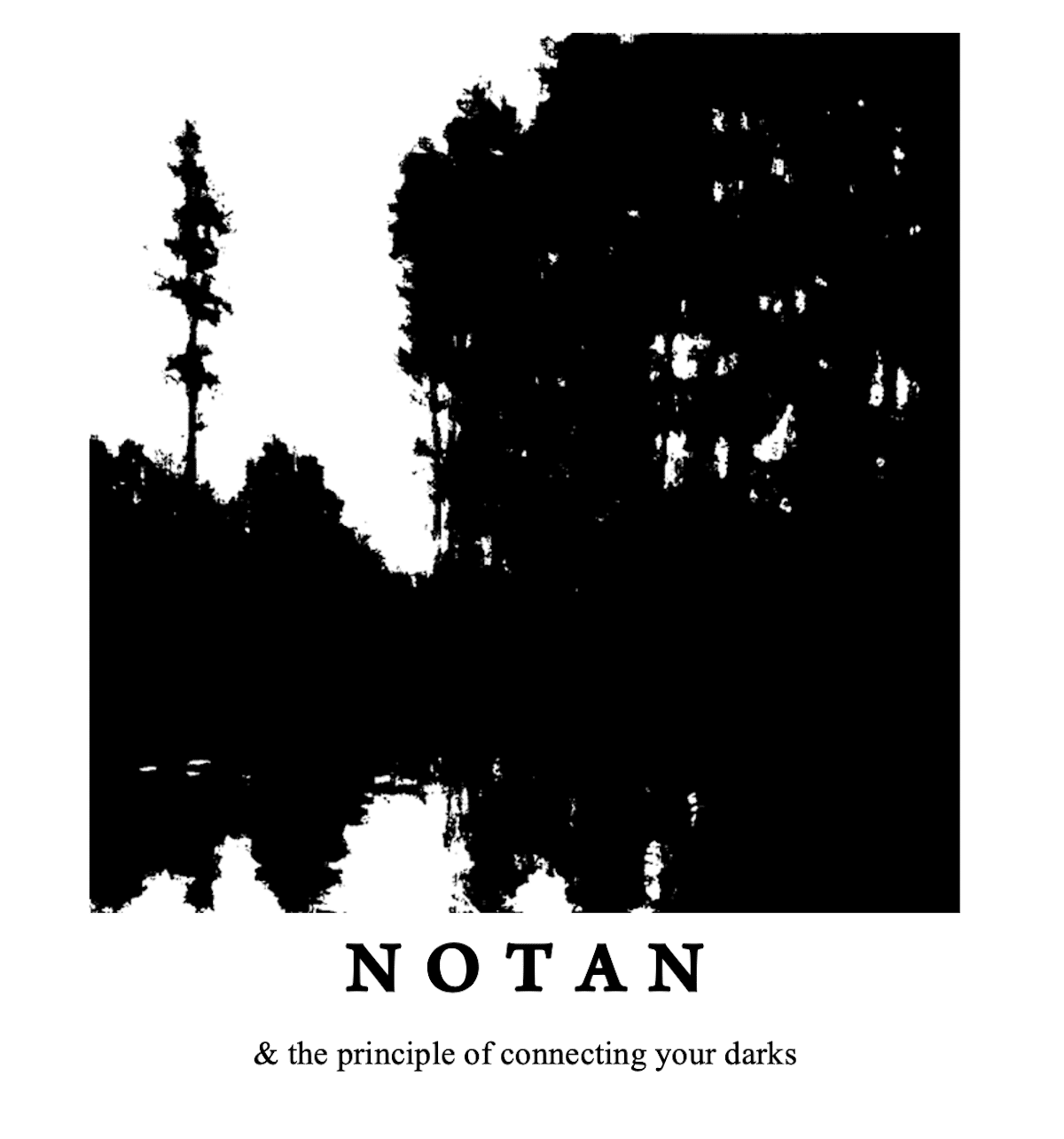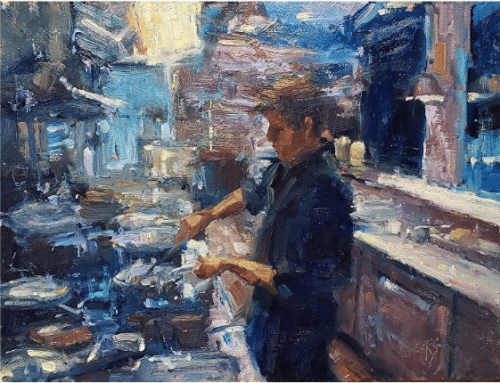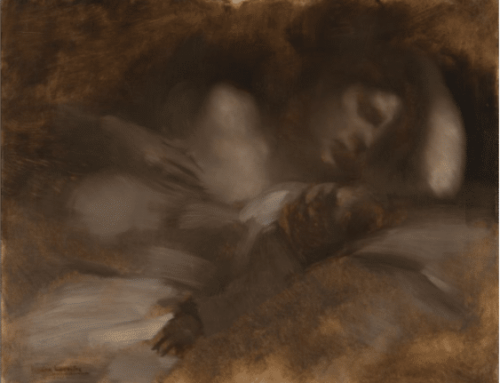Nōtan is a Japanese design concept that literally means “dark light” or perhaps more comprehensively, “light-dark harmony.” It is about the interaction of positive and negative shapes, the play and placement of light and dark elements in relation to each other in the composition of art and imagery.
The balance of light and dark elements isn’t always apparent in painting because color and line carry design weight too. But the relative quality of dark and light (i.e. value) can be thought of separately from color. You can use your computer to reveal notan by desaturating an image of its color and cranking up the contrast, diminishing fine detail and revealing the placement of light and dark elements. Notan studies can be very helpful with only two values, but they work in three or four values as well.
While Europe was chasing scientific perspective, Japanese artists elaborated philosophies and principles of two-dimensional design. The creative principles behind two-dimensional design thus came as something of a revelation for the late nineteenth-century Impressionists and post-Impressionists, who were already busy freeing themselves from the historical constraints of Western painting.
Connect Your Darks
One thing notan reveals is whether and how an artist has connected the darks in a composition. It’s far from mandatory, but connected darks can help prevent a scattershot, overly distributed array of shapes. In the Tonalist landscape above, connected darks enable a pared-down, natural-looking landscape composed of seemingly random or casually arranged linear elements and masses to work better than otherwise; the painting looks like it has the randomness of nature, but it actually has this secret abstract scaffolding of connected darks underlying it.
This is a technique one often sees in Japanese prints. For example, let’s look at Japanese master Buyo, from the series Thirty-Six Views of Mount Fuji.
In the notan below, note how Buyo has preserved a harmonious organicism and kept any of the main boats from being orphaned from the others by literally connecting them with each other by some relatively dark element – one boatman’s prow visually overlaps with another’s pole, part of one boat connects to the island, the vertical masts of the middle-ground boats to the left of the island visually connect the island to the mainland above and behind it.
There’s just one small isolated mass – a group of boats just off the righthand coast of one of the islands – but every boat in that little group connects with the others. There’s a similar fleet of small boats way in the background that connects to the distant land mass, also by way of their vertical masts. The composition is almost entirely a continuous line connected by the darks.
“Notan-beauty means the harmony resulting from the combination of dark and light spaces – whether colored or not – whether in buildings, in pictures, or in nature,” wrote Arthur Wesley Dow, who was largely responsible for introducing the concept to American artists.
A strong notan design can serve you well as a framework for building the rest of the design of any painting.




